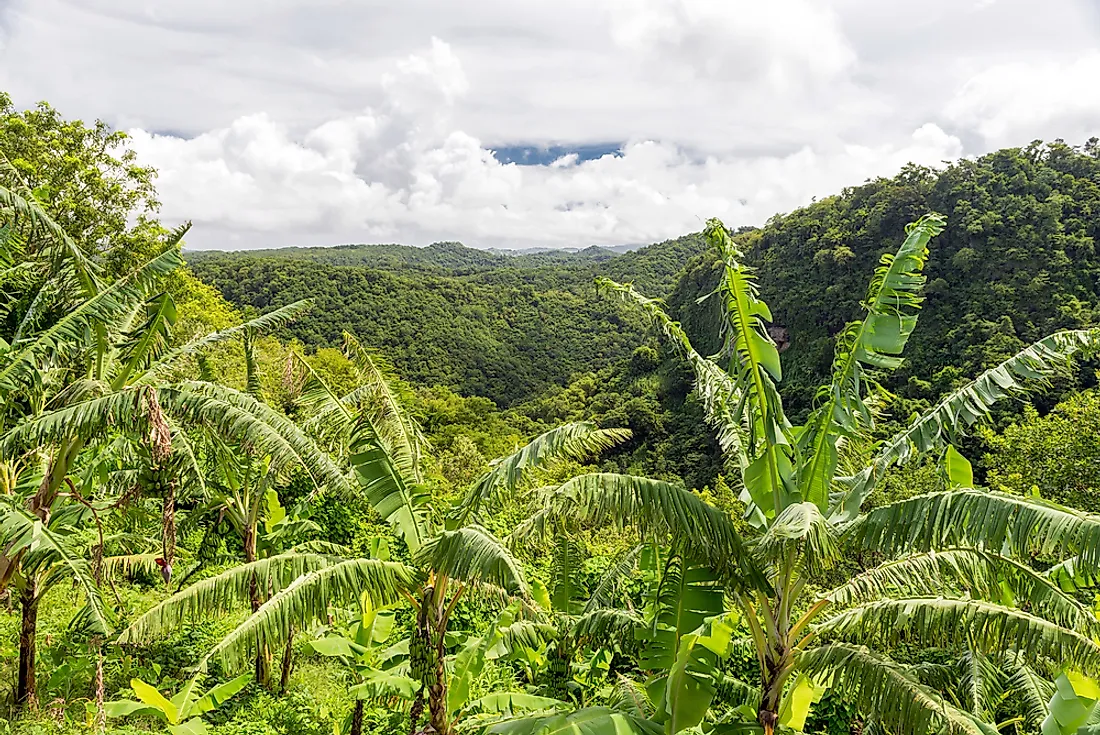What Are The Biggest Industries In Saint Lucia?

Saint Lucia, Previously known as Iyonola, is an independent island state that is in the Caribbean Sea. It is one of the windward islands of the Lesser Antilles. The island state occupies an area of about 238 sq miles. Saint Lucia had a population of over 165,595people by 2010. Saint Lucia is situated on the southern side of Martinique, and northwest of Barbados. Castries is the principal port and capital city of Saint Lucia. The island is bordered by the Atlantic Ocean on one side and the Caribbean Sea on the other side. The first European settlers in Saint Lucia were the French who signed a treaty in 1660 with the locals. Thomas Warner claimed the region for the United Kingdom in 1964 and even brought 100individuals to protect the island from the French. The British controlled the area from 1663 to 1667. The French made Saint Lucia an official French crown colony in 1674. The French and the British fought fourteen times over the region. England took over the island in 1814.
Since the ownership of the island was switched several times between the French and the British, it was also referred to as the Helen of the West-Indies. The island state was a part of the West-Indies-Federation from 1958 to 1967 when the colony was finally dissolved. The island state is a member of the West-Indies-Associated States. Saint Lucia became a commonwealth nation and an independent state in 1979 under Sir John Compton. Sir Compton served as Saint Lucia’s prime minister until 1996 when Lewis Vaughan succeeded him. Currently, the economy of the island state depends on revenue from the tourism sector, the agricultural industry, particularly the sales of bananas, with some input from the small-scale manufacturing industries.
The biggest industries in Saint Lucia
Agriculture
Agriculture is one of the main sectors in Saint Lucia, which contributes over 2.9% of its GDP. Even though it is not the biggest contributor to the country's GDP, the agricultural industry has employed over 20% of the workforce in the country. Sugar cane was the initial main cash crop grown on the islands. Both the French and the British became more interested in the region after the sugar industry started developing. The French began preparing the land for planting sugar cane on a large scale as a commodity crop in 1765. The sugar industry thrived in Saint Lucia until 1836 when slavery was abolished, and by the 1960s, the sugar plantations had been replaced by bananas.
Banana production is one of the main industries in the country which has helped fund Saint Lucia's developments since the 1960s. Banana production has been fluctuating for the last few decades due to plant diseases (Black Sigatoka disease), and climatic conditions. Banana production increased from 32,000 tons in 1975 to 160,000 tons in 1990, before reducing to 120,000 tons in 2004. The latest storm to affect banana production was the tropical storm Kirk in 2018. The storm damaged over 80% of the banana crops in the country. The banana industry was heavily affected by numerous crisis and uncertainties in the 1990s. The WTO (World-Trade-Organization) ruled that the EU had gone against the Free-trade legislation when they gave preference to the Caribbean banana exports. The ruling forced many banana farmers to abandon the industry, claiming that the country had lost its profitable market. The problem worsened when the SLBGA (Saint Lucia Banana-Growers Association) was bankrupted by corruption in 1994.
Tourism
The tourism sector is currently the leading industry in the country, which contributes over 65% of the GDP. It is the primary source of foreign exchange and employment in Saint Lucia. The American Express Travel revealed that Saint Lucia is the top destination for weddings on the planet in 2006. The country is quite popular due to its unique scenery and tropical climate. Saint Lucia has numerous cozy beaches with some covered by black volcanic sand. The island's temperature, which averages at 27°C all year long and ideal climate, makes its beaches irresistible. The island receives over 900,000 visitors annually. Saint Lucia's tourism industry started recovering in 2004, after the post-September 11, 2001 recession. The tourism industry accounted for over 48% of Saint Lucia's GDP in 2005, while the restaurant and hotel industry grew by 6.3%. The United States accounted for over 35.4% of the tourists who visited the island in 2005. A considerable percentage of the tourists visits the islands as part of a cruise, and most of them prefer spending their holiday in Rodney Bay, Marigot Bay, Soufriere, and Castries.
Saint Lucia is known as the most spa-oriented destination in the Caribbean. Some of the main resorts on the island include the Cap Maison Resort and Ladera Resort. Ladera is situated on a volcanic ridge on one of the oldest cocoa plantations in the region. Other than the beaches and unique weather, the country has an enticing cuisine, intriguing history, and rich culture. The island has a flavorful culture from art to music. The island's cuisine includes meat, spices, and exotic fruit. The local chefs have many flavors for the tourists to enjoy. The local music is filled with new tone on their genres, which ranges from reggae to jazz. Saint Lucia's art includes numerous clay sculptures and painting. Some of the leading attractions on the island include the St Lucia Botanical Gardens, Sulphur Springs, and the pitons. The Sulphur Springs is the only drive-in volcano on the planet. The botanical garden has a sulfur waterfall and numerous plant species. The Pitons are two volcanic plugs (Petit Piton and Gros Piton).
Other Industries
Other sectors which contribute to the country's GDP include the manufacture of clothing, cardboard boxes, beverages, and assembling of electronic components. One of the beverages produced in Saint Lucia is the Piton beer. Piton beer is a Pilsner brand that is brewed by Windward-and-Leeward Brewing Company. Saint Lucia is also one of the leading producers of essential oils in the Caribbean.











